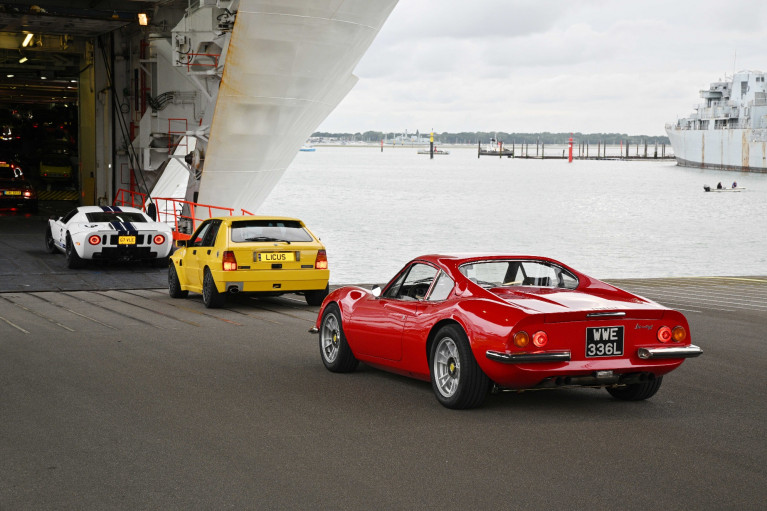Brittany Ferries carried hundreds of classic cars and of considerable value when the beautiful vehicles last week headed across the English Channel to France for the Le Mans Classic Festival.
The classic cars belonged to Brits and other nationals attending the biennial Le Mans Classic festival in Pays de la Loire.
In total 430 rare and valuable cars are making the voyage from Portsmouth to ports of Caen and St Malo over the next couple of days. Their estimated value is £25.8 million, making the garages of Brittany Ferries’ vessels among the most valuable in Europe – if only for a few hours.
The collection of beautiful metal included a growling Corvette Stingray C8 (one of only 36 in the UK), Dodge Demon and lovingly restored vintage Porsches and Jaguar E-Types. There was also plenty of room on board for the more humble Hillman Imp, taking the Thursday morning crossing from Portsmouth to Caen.
This is the first post-pandemic Le Mans Classic. Owners were raring to get beloved cars back on the road and back to the petrol-head’s circuit of choice.
Paul Jorgensen from Southampton, for example, was taking a 1965 Mk 1 Ford Lotus A frame. Previous travel plans had been thwarted by Covid, but he took advantage to get not one but two cars across the channel this year, with the help of some friends,
“I even bought us special T-shirts four years ago and we’ve just been desperate to get them on and finally get to Le Mans,” he said.
Paul Courtenay had travelled much further to get to Portsmouth for the departure to France. His journey began in Norway. He then picked up his car, a 1977 Lancia Beta Verde known affectionately as “Minty Monty”, in Wiltshire.
Like so many other drivers Paul was keen to show off the care and attention that had gone into the Lancia’s maintenance. “It was once on Top Gear” he said, with a wry smile.
An eye-catching yellow Porsche carried drivers nick-named “Goose” and “Maverick”, from Preston in Lancashire, These Top Gun wannabes were full of anticipation and were particularly impressed by the white Porsche Speedster that pulled up alongside. “That’s what Kelly McGillis drove in the film,” Goose pointed out, with only slight disappointment that she wasn’t in the driver’s seat.
Whilst boarding, the ships’ garages echoed to the throaty notes of cars like Ford GT40s and an Italian Tenor in the form of a Lamborghini Murcielago. With their beloved cars safely parked owners were guided up to cabins, restaurants and bars to relax before disembarking in France.
The Le Mans Classic takes place every other year with the 4-day event having concluded last Sunday, 3 July.


























































